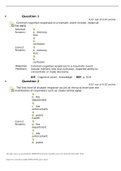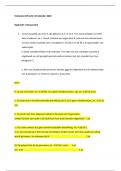Samenvatting
Summary Lectures oncology
- Instelling
- Radboud Universiteit Nijmegen (RU)
All lectures of the master course oncology (NWI-BM015c) are covered in the document (using the powerpoint slides and additional information covered in the lectures). The figures included are taken from the PowerPoint slides. All processes and concepts discussed are extensively described using examp...
[Meer zien]













